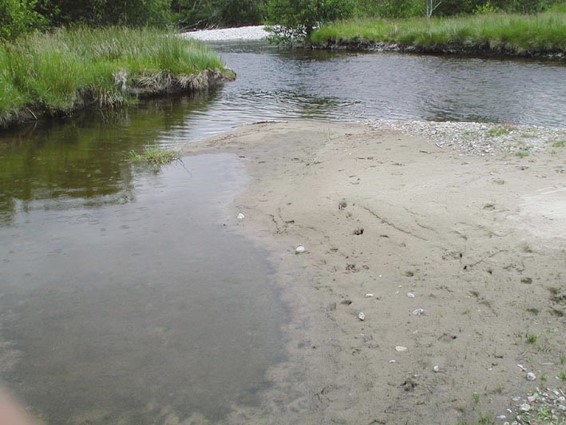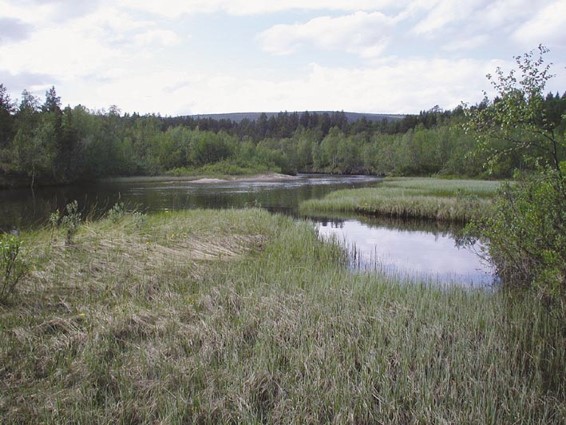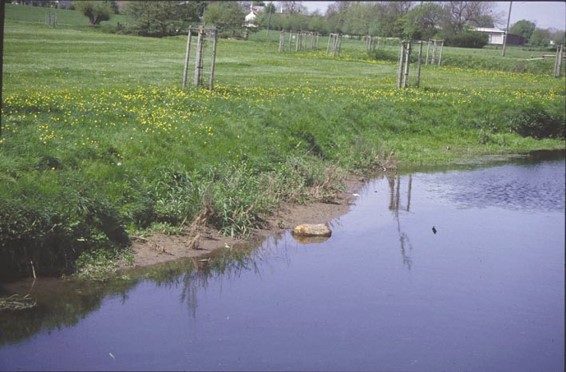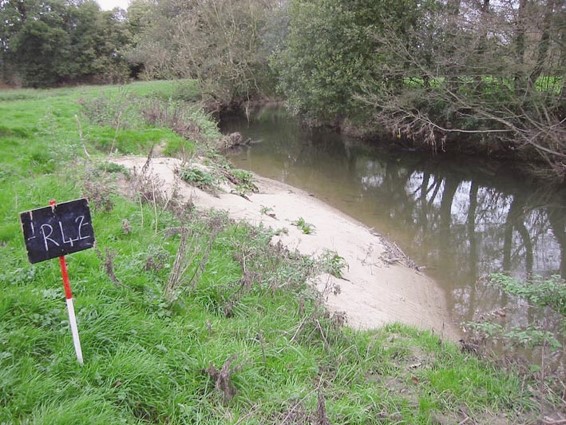Section L: Channel & Bank Features
SECTION L: EXTENT OF CHANNEL AND BANK FEATURES

This section includes a wide variety of features ranging from bars to exposed bedrock.
IN EACH CASE, ONE BOX PER FEATURE MUST BE TICKED.
Records are made on their occurrence within, or along, the total 500m length of the site. Record ‘None’ when <1% occurrence; ‘Present’ if 1-33% occurrence; and ‘E’ when >= 33% occurrence .
For the five features marked with an asterisk (*), presence can be ticked even if they do not occur in >1% of the site.
For the definitions of channel features, see Section G. The following are recorded (spot-check abbreviations are included for easy cross-reference).
Marginal deadwater
Margins of the main channel which have no perceptible flow. These are good refuge areas for various aquatic invertebrates and fish fry. Examples include where the bank has eroded into an embayment, or remnants of old abandoned channels are still connected to the main channel (also recorded as backwaters in Section M). Marginal deadwater may also occur downstream of large side bars.

 Examples of marginal deadwaters
Examples of marginal deadwaters
Unvegetated earth cliff(s)
See Section G, marginal and bank features. Extent is for both banks.
Vegetated earth cliff(s)
See Section G, marginal and bank features. Extent is for both banks.
Exposed bedrock
See Section G, channel features.
Exposed boulders
See Section G, channel features.
Vegetated bedrock/boulders
See Section G, channel features.
Unvegetated mid-channel bar(s)
See Section G, channel features.
Vegetated mid-channel bar(s)
See Section G, channel features.
Mature island(s)
See Section G, channel features.
Unvegetated side bar(s)
See Section G, marginal and bank features. Extent is for both banks.
Vegetated side bar(s)
See Section G, marginal and bank features. Extent is for both banks.
*Discrete unvegetated silt deposit(s)
DO NOT RECORD when silt covers the bed from bank to bank and does not contrast with the predominant substrate present in the whole site (recorded as ‘SI’ in spot-checks in Section G) – the deposits must contrast with the predominant river bed substrate(s). Unvegetated silt deposits may be either underwater or exposed, in the channel or on the margins with a minimum size of 5m2. Silt deposits are often formed in response to obstructions (e.g. fallen tree, naturally protruding boulders, or artificial deflector structures); such deposits would be recorded as ‘present’. Extensive deposits are often associated with rivers recovering from artificial channel over-widening. If they form discrete ledges, and occur in more than 33% of the site, record as ‘E’.

Example of discrete unvegetated silt deposit
*Discrete unvegetated sand deposit(s)
A discrete unvegetated sand deposit is either underwater or exposed, in the channel or on the margins with a minimum size of 5m2. DO NOT RECORD when sand covers the bed from bank to bank (recorded as ‘SA’ in Section G) – the deposits must contrast with the predominant river bed substrate(s). Discrete sand deposits are often formed in response to obstructions (e.g. fallen tree, naturally protruding boulders or artificial deflector structures), or in recesses in banks. Discrete sand deposits are recorded because they are valuable habitats for several invertebrate species. As sand deposits are not considered to be ‘discrete’ if they are present along more than 33% of a site (sand would be a predominant substrate in Section G), it is not possible to record extensive discrete sand deposits (‘extensive’ box not on the form).

Example of discrete sand deposit
Silt over gravel
If silt is present across the site as a thin layer over or inside gravel-cobble bed (you can check by kicking the gravel bed and checking for silt plumes), record it as ‘Silt over gravel’. Silt over or inside gravel and cobble beds can be detrimental to species living or laying their eggs in the substrate.